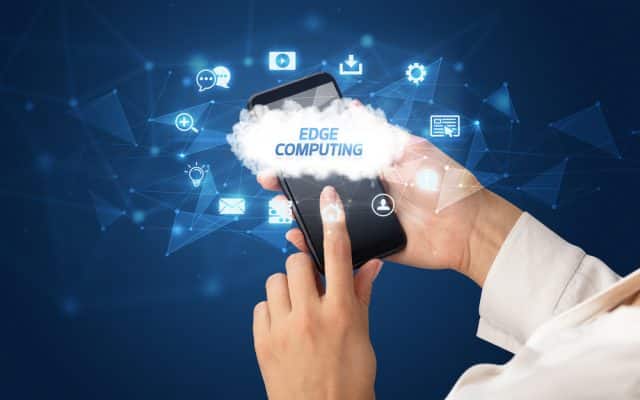Why the time is right for enterprises to consider edge computing [Q&A]

The technology world never stands still for very long and keeping in touch with trends is important if you're not to be left behind.
In recent years we've seen moves to the cloud and to DevOps, trends which show no signs of slowing down. But there's now a trend towards putting computing power at the edge, closer to the users.
So is edge the future for enterprise cloud? We spoke to Amir Hashmi, CEO of managed IT services company zsah, to find out.
BN: Why is now the time for businesses to consider edge computing?
AH: The entry point for businesses wanting to utilise edge computing has never been so low. Thanks to the maturing of cloud and the technology industry as a whole, solutions are taking up less of a footprint than they ever have, and the cost of hardware has significantly decreased -- making it more accessible to all businesses. For example, edge computing can be delivered from a device as small and inexpensive as a Raspberry Pi.
Applications are now designed to take advantage of what edge computing can supply with more uses becoming apparent every day. The skillsets within this area have advanced and are available as a service.
Another boost for edge, and another factor related to the ever-decreasing footprint of technology, is that larger companies now have more capacity available within their own data centres due to utilising services in the public cloud. Instead of decommissioning old, on premises servers, these can be reused for other cutting-edge use cases working alongside their cloud function.
BN: Can you give us some examples of where edge can make a significant difference?
AH: Where there is a need for real-time, high speed compute edge can deliver high-quality results. One example where edge computing is having a significant impact is within the transport sector, more specifically, health and safety in a maritime port. Utilising AI-powered computer vision at the edge of a video feed will assess the movement of goods around a port, and ensure the route taken is correct and safe, and that goods aren’t stored n unsafe/secure areas. This also guarantees not endangering human beings and coordinates the routes taken to avoid collisions.
In manufacturing, edge computing can be used to prevent wasting materials in processes such as glass blowing. Both time and temperature are key factors, as if either of these are exceeded the glass will break, causing not only the wastage of materials and money but also a potential health and safety risk.
BN: How does edge tie in with cloud strategy?
AH: Edge computing and the cloud work hand in hand. Edge computing furthers the capabilities available from a cloud solution, with the ability to deliver data and transactions in milliseconds. Different parts of the solution will be in the cloud or on the edge dependent on the needs: near real-time decision-making processes will be on the edge, then archiving of this data will go into the cloud and be stored and are available to be queried or utilised retrospectively.
Kubernetes applications are a big player in this, as they are agnostic so they can run on the edge, public, private or on-prem and are easily transferable. Edge computing is already being adopted and becoming (or already is) available through the main public cloud providers.
BN: How dependent is edge on the progress of the 5G rollout?
AH: There are certainly benefits from edge utilising 5G, due to 5G at its core proving low latency and high speed as its primary benefits. However, edge is not dependent on 5G it just widens the scope of different use cases for a company. For example, an airport has sensors on the runway that need to deliver information to their on-premise servers, these will need to be connected by fibre and failing that over Wi-Fi. If the airports were to utilise private 5G this would connect everything everywhere and they would not have to worry about Wi-Fi connectors, boosters or cabling. 5G would give them access to locations they couldn’t get to previously, and the ability to utilise the data there and then on the edge where fast compute is needed.
BN: What privacy and security concerns does a move to the edge raise?
AH: A move to the edge raises the security concerns that come with an on-premise solution such as the physical security of the infrastructure and access to it. We then have to consider data security on the edge, ensure things like secure communications are in place, data isn’t sent over the web unless it is encrypted.
Naturally, companies will have to extend security measures from computers and servers to the edge device -- but in effect, this is the same as adding any new device to a network. These are standard practices in the cloud, excluding the physical security previously mentioned -- but the physical protection of IT assets is nothing new or novel.
Image credit: ra2studio/depositphotos.com
